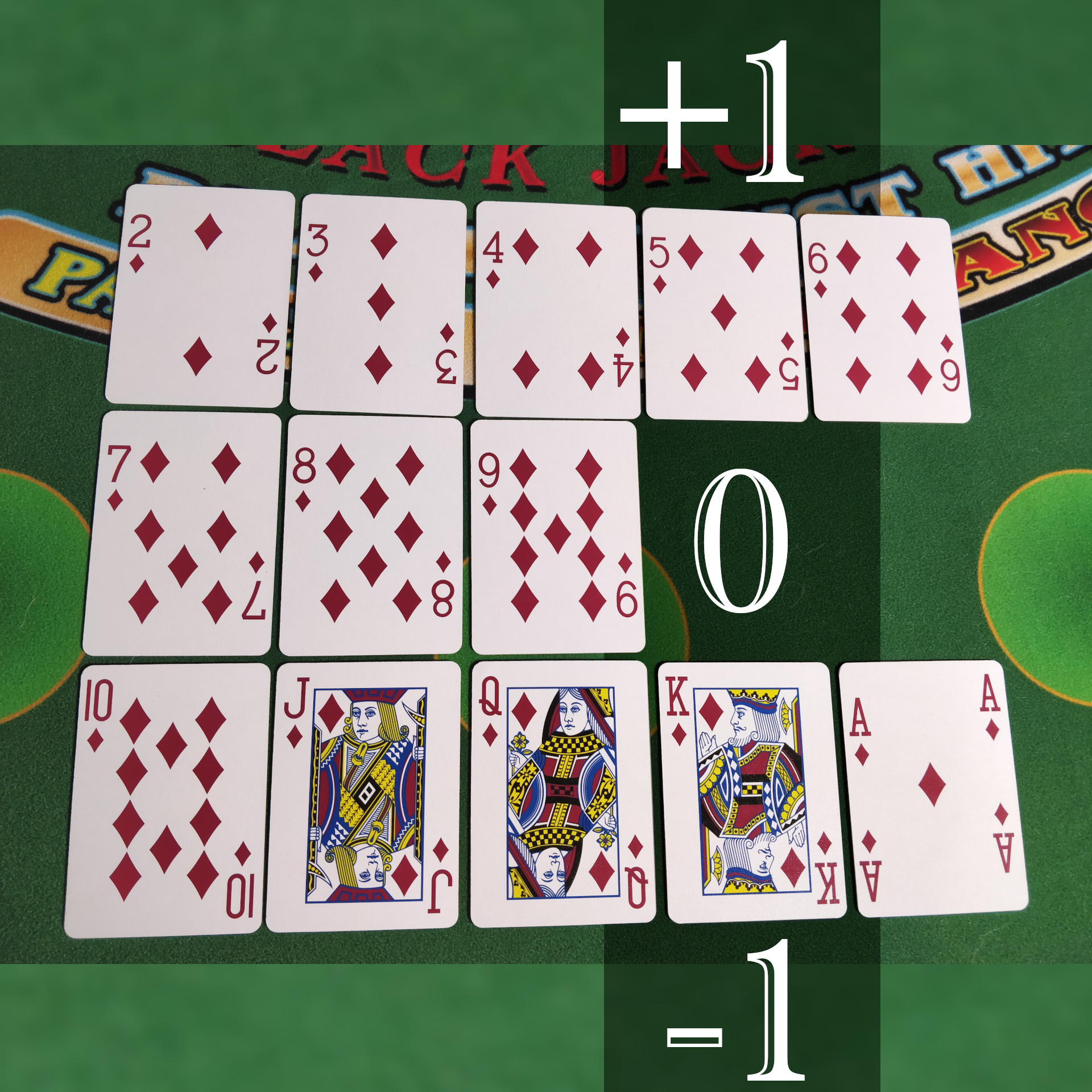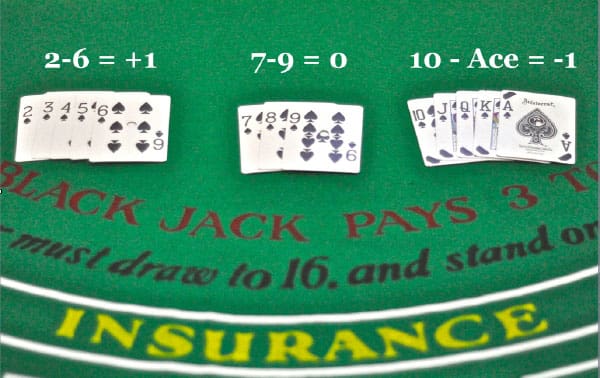Card counting is a technique that lets blackjack players know when the advantage shifts in their favor. When this occurs, card counters will increase their bets. When the advantage shifts in favor of the. Combination SUM and COUNTIF to Count Unique Values If you want to find the count of unique values in a single cell without extracting a separate list, then you can use a combination of SUM and COUNIF. In this method, you just have to refer to the list of the values. Counting Cards Can Be Broken Into 4 Steps: Step 1. Assign a value to every card; Step 2. Keep a “Running Count” based off of the values of the card dealt; Step 3. Use this information to calculate the count per deck or “true count” Step 4. Change your bets as the true count rises.
-->Note
These visuals can be created and viewed in both Power BI Desktop and the Power BI service. The steps and illustrations in this article are from Power BI Desktop.
Sometimes a single number is the most important thing you want to track in your Power BI dashboard or report, such as total sales, market share year over year, or total opportunities. This type of visualization is called a Card. As with almost all of the native Power BI visualizations, Cards can be created using the report editor or Q&A.
Note
Sharing your report with a Power BI colleague requires that you both have individual Power BI Pro licenses or that the report is saved in Premium capacity.
Prerequisite

This tutorial uses the Retail Analysis sample PBIX file
From the upper left section of the menubar, select File > Open
Find your copy of the Retail Analysis sample PBIX file
Open the Retail Analysis sample PBIX file in report view .
Select to add a new page.
Option 1: Create a card using the report editor
The first method to create a card is to use the report editor in Power BI Desktop.
Start on a blank report page and select the Store > Open store count field.
Power BI creates a column chart with the one number.
In the Visualizations pane, select the card icon.
You have now successfully created a card with the report editor. Below is the second option for creating a card using the Q&A question box.
Option 2: Create a card from the Q&A question box
The Q&A question box is another option for you to use when creating a card. The Q&A question box is available in Power BI Desktop report view.
Start on a blank report page
At the top of your window, select the Ask a Question icon.
Power BI will create a card and a box for your question.
For example, type 'Total Sales for Tina' in the question box.
The question box helps you with suggestions and restatements, and finally displays the total number.
You have now successfully created a card with the Q&A question box. Below are steps for formatting your card to your specific needs.
Format a card
You have many options for changing labels, text, color and more. The best way to learn is to create a card and then explore the Formatting pane. Here are just a few of the formatting options available.
The Formatting pane is available when interacting with the card in a report.
Start by selecting the paint roller icon to open the Formatting pane.
With the card selected, expand Data label and change the color, size, and font family. If you had thousands of stores, you could use Display units to show the number of stores by thousands and control the decimal places as well. For example, 125.8K instead of 125,832.00.
Expand Category label and change the color and size.
Expand Background and move the slider to On. Now you can change the background color and transparency.
Continue to explore the formatting options until your card is exactly how you'd like it.
Considerations and troubleshooting
If you do not see a question box at all, contact your Power BI admin.
Next steps
This article will teach you how to count cards using the Hi-Lo Method. The reason the player who can properly count cards is feared by the Casino is simple. It puts the odds in the player’s favor. The house edge in the game is destroyed when the shoe is rich in face cards. The odds for the rest of the shoe will remain with the player to win more bets than the dealer due to the fact that he can wave off hitting a card on a likely to bust hand. The dealer must hit any hand lower than a soft 17 (Ace and a six). A rich shoe in face cards means the dealer has a higher chance of busting their hand.
The idea behind card counting is to count the shoe down by keeping track of the cards as the dealer shows them. You know how many face cards are in a six-deck shoe and how many cards are under six not counting the aces. When few low cards remain and the majority of the cards in the shoe are high cards, the shoe favors the player. When this situation is present, the player raises the size of his bets. The easiest and most popular method of card counting is the Hi-Lo method which will be described here.
First, you must know the point values to assign to each card. Memorize these or you will never be able to successfuly implement this strategy.
Low Cards: Two, Three, Four, Five and Six cards are valued at +1. Low cards are helpful to the dealer who keeps drawing while the value of his hand is under 17. Low cards give the dealer a higher chance of beating your hand and a less likely chance to bust.
High Cards: Ten, Jack, Queen, King, and Ace are valued at minus (-) 1. You want the deck to have more high cards remaining near the end of the shoe. This is because they make the dealer more likely to bust. It also gives you a higher chance of getting dealt 17 or higher on your first two cards, including blackjack.
Neutral Cards: Seven, Eight and Nine have no value, or zero (0). The purpose of this is to balance the system. It allows there to be an equal number of high cards and low cards so the final count of an entire shoe equals zero.
Now for the process of counting. When you have the counting values of each card down, you will now start to keept the “running count“. The running count is the process of adding and subtracting the values of each card as they are dealt. For example, if the first five cards that come out of the deck are Jack, 7, 3, King, Ace, the running count would be minus (-) two. (J=minus 1, 7=0, 3=+1, King=minus1, Ace=minus1). This may seem easy or difficult to you, but either way, practice makes perfect. The more you practice keeping the running count, the better you will get. The purpose of this site is to help you get better and this is why we provide the unique Card Counting Trainer for your use. Use it as often as you like to get better at keeping the running count.
The running count, however, is not the final step in the Hi-Lo method. You must also learn to convert the running count into the “true count” of the shoe. The true count gives you a better determination of whether the shoe gives you the advantage. The way to determine the true count of the shoe is to divide the running count by the remaining cards left in the shoe. Casinos offer games ranging from a single deck of cards to eight decks of cards, so you will have to know how many decks are in the game you are playing. You will then also have to be able to estimate how many cards or decks are left in the shoe. The way to estimate this is to look at the amount of cards in the discard tray by the dealer. Let’s say you are playing a standard six deck shoe, your running count is at 9, and you see about three decks in the discard tray. Take your running count of 9, divide it by the remaining amount of decks 3 (6 deck shoe minus 3 discarded decks = 3 remaining decks) and you get a true count of 3. to be more accurate, you can estimate to the nearest half deck of cards remaining.
The last step is applying your card counting skills to your betting. You gain your advantage against the Casino by betting larger when the count is positive and betting smaller or the minimum when it is negative. The true count determines the size of your bet. What you will do is value each bet as a unit based on the size of your minimum bet. If you are playing a $25 table, one unit is $25. You will increase the amount of units based on the true count. Follow the table below for playing at a standard 6 deck table.
True Count Units to Bet
0 or less 1
+1 2

+2 4
+3 8
+4 10
Card Values When Counting Cards
+5 or greater 12
How To Count Cards Easy
Now you know the basics of card counting using the Hi-Lo method! As stated earlier, practice makes perfect. Please utilize our unique Card Counting Trainer to help you get better and better at keeping the running count. You can also visit some of our recommended online casinos to test your counting skills while wagering real money. While online casinos do not keep a true shoe and the card counting will not give you an advantage, it will still help you get ready for the live casinos by including all of the actions of placing bets, keeping the count, and knowing when you would increase your bet.
Carb Counting Values
please enter your email for news, updates and more!
Most Viewed Posts